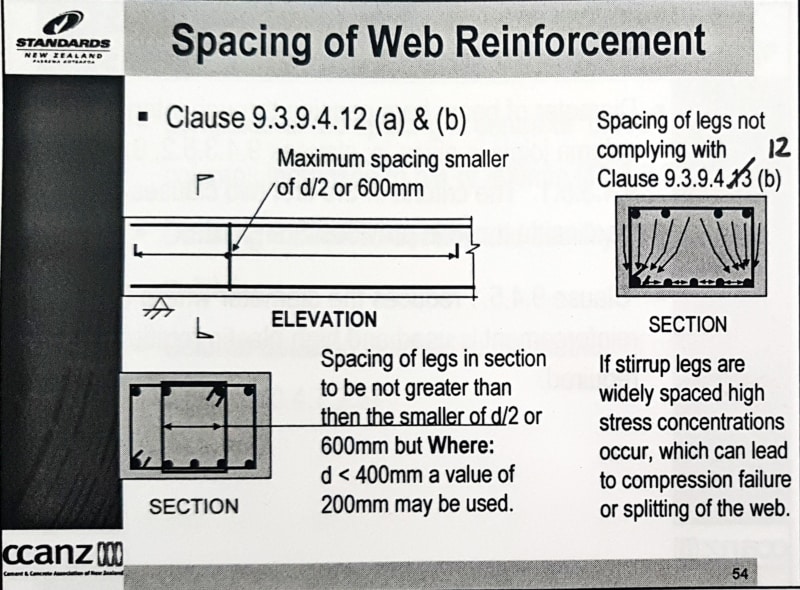I’ve got a strange situation where I have a 36” x 36” concrete beam that is linking (4) concrete caissons together for a foundation.
I have a group of (4) caissons. The (4) caissons are spaced 10’ From each other, in each direction. To “tie” the (4) caissons to each other, I will need a 36” x 36” concrete beam to sit atop the caissons. The beam is this big simply due to geometric requirements....for example, I have (4) anchorbolts at each beam corner that require 28” embedments, the caissons are 36” diameter, and the caisson vertical reinforcing needs to be properly embedded into the concrete beam above.
I have a question about proper detailing of the closed ties for such a big beam. It seems odd to me that I just need to provide a closed tie around the perimeter and that be it. I’ve looked in my CRSI guides, ACI, and other places and do not see any other requirement. Should there be other ties, through the body of the beam, simply to meet some minimum tie requirement? I can’t find it if its required....but is there a best practice out there where I should do something like this?
I have a group of (4) caissons. The (4) caissons are spaced 10’ From each other, in each direction. To “tie” the (4) caissons to each other, I will need a 36” x 36” concrete beam to sit atop the caissons. The beam is this big simply due to geometric requirements....for example, I have (4) anchorbolts at each beam corner that require 28” embedments, the caissons are 36” diameter, and the caisson vertical reinforcing needs to be properly embedded into the concrete beam above.
I have a question about proper detailing of the closed ties for such a big beam. It seems odd to me that I just need to provide a closed tie around the perimeter and that be it. I’ve looked in my CRSI guides, ACI, and other places and do not see any other requirement. Should there be other ties, through the body of the beam, simply to meet some minimum tie requirement? I can’t find it if its required....but is there a best practice out there where I should do something like this?



